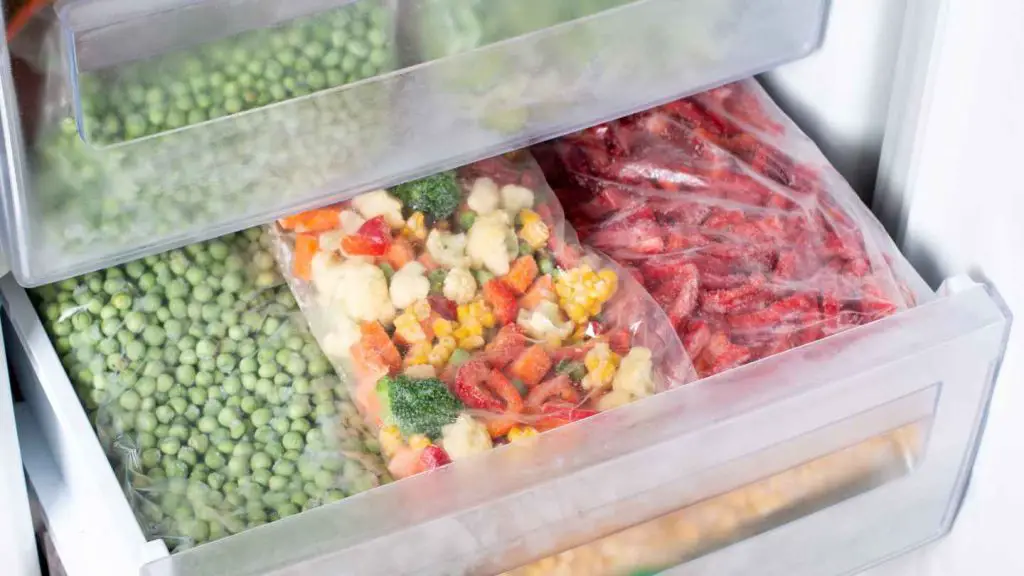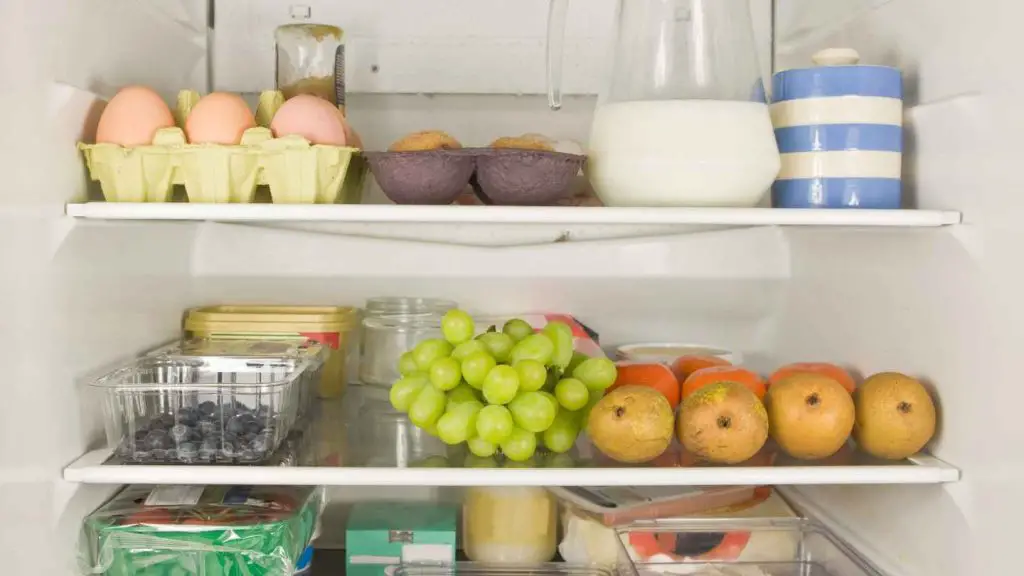Power outages can happen unexpectedly, leaving you without electricity for hours, days, or even longer. During these times, your modern refrigerator becomes your lifeline, preserving the freshness and safety of your perishable food items. However, without power, the temperature inside your refrigerator will gradually rise, creating an environment that promotes bacterial growth and food spoilage.
1 in 6 people in the U.S. get sick due to food poisoning or food-related diseases every year; therefore understanding how long different types of food can last in your refrigerator without power is not only essential for maintaining food safety but also for minimizing food waste and financial losses. By knowing when to discard perishable items, you can avoid consuming spoiled food that could potentially lead to foodborne illnesses.
Moreover, being well-prepared for power outages allows you to make informed decisions about your food supply. You can plan by stocking up on non-perishable items and ensuring you have enough ice or coolers on hand to keep your food fresh for an extended period. This knowledge empowers you to navigate through power outages confidently, ensuring the health and well-being of yourself and your loved ones.
Factors Affecting Food Storage Durability

When it comes to food storage during power outages, several factors come into play that can affect the longevity and safety of your perishable items. These factors are crucial for making informed decisions about your food supply and ensuring that you and your family can consume food that is both safe and fresh. Let’s explore the key factors that can impact food storage durability during power outages:
1. Temperature Variations in Refrigerators
One of the primary factors that influence the longevity of food in your refrigerator without power is temperature variation. When the electricity goes out, the temperature inside your refrigerator will gradually rise. The rate at which the temperature increases will depend on various factors such as the ambient temperature, insulation of your refrigerator, and the frequency of opening the refrigerator door.
It’s important to note that the temperature inside your refrigerator should ideally be kept below 40°F (4°C) to slow down bacterial growth and maintain the freshness of your food. However, during a power outage, the temperature can rise above this threshold, leading to an increased risk of food spoilage and bacterial contamination.
Also, read: Is 45 Degrees a Safe Temperature for a Refrigerator?(#3 is top secret)
2. Impact of Power Outage Duration
The duration of the power outage plays a significant role in determining the durability of your food items. The longer the power outage, the higher the chances of your food reaching unsafe temperatures and becoming unfit for consumption. It’s crucial to understand that perishable food items can only withstand certain temperature ranges for specific durations before they become unsafe to eat.
During shorter power outages that last between 1 – 4 hours, your food items may remain within safe temperature limits, especially if you keep the refrigerator door closed as much as possible. However, during prolonged power outages, it becomes increasingly difficult to maintain safe temperatures, and the risk of food spoilage and bacterial contamination significantly increases.
3. Type and Condition of Food Items
The type and condition of the food items in your refrigerator also play a vital role in determining their durability during power outages. Different food items have varying shelf lives, and some are more susceptible to spoilage than others. Perishable items such as meat, poultry, seafood, and dairy products are particularly prone to bacterial growth and should be handled with extra caution.
Furthermore, the freshness and quality of the food items before the power outage can affect their post-outage durability. Food items that are nearing their expiration dates or are already close to spoilage may not last as long without power compared to fresh items. Therefore you should inspect your food items regularly and discard any that show signs of spoilage or are past their prime.
Related: Where in the Refrigerator Should You Store Raw Meat?
4. Proper Packaging and Storage Techniques
The way you package and store your food items before a power outage can significantly impact their durability. Proper packaging helps to maintain the quality and freshness of your food for a longer period. For example, storing perishable items in airtight containers or wrapping them tightly with plastic wrap can help to prevent moisture loss and reduce the risk of bacterial contamination.
Additionally, organizing your refrigerator properly can help maintain a more consistent temperature distribution. By grouping similar items together and keeping them away from the refrigerator door, you can minimize the temperature fluctuations that occur when the door is opened.
5. Role of Refrigerator Maintenance
The maintenance of your refrigerator plays a crucial role in ensuring its optimal performance during power outages. A well-maintained refrigerator is more likely to retain cooler temperatures for a longer period, even without power. Regular cleaning, defrosting, and inspection of the refrigerator’s seals and gaskets are essential to ensure its efficiency.
If your refrigerator is older or shows signs of deteriorating performance, it might be worth considering investing in a backup power source, such as a generator or a battery-operated refrigerator, to maintain safe temperatures during power outages.
Food Safety Guidelines

When it comes to food storage during power outages, following proper food safety guidelines is crucial to protect yourself and your loved ones from foodborne illnesses. Without electricity, the risk of bacterial growth and food spoilage increases significantly. So, we will explore the key concepts and guidelines that you need to keep in mind when dealing with power outages.
The Concept of the “Danger Zone” for Food
The “danger zone” refers to the temperature range in which bacteria multiply most rapidly. This zone is typically between 40°F (4°C) and 140°F (60°C). When food is left in this temperature range for an extended period, harmful bacteria can multiply to dangerous levels, increasing the risk of foodborne illnesses.
Bacterial Growth and Foodborne Illnesses
Bacteria are present everywhere, including on the surfaces of raw food items. When the conditions are favorable, such as within the danger zone temperature range, bacteria can multiply rapidly and produce toxins that can cause foodborne illnesses.
Common bacteria that can cause foodborne illnesses include Salmonella, E. coli, and Listeria. These bacteria can cause symptoms such as nausea, vomiting, diarrhea, abdominal pain, and in severe cases, even hospitalization.
Recommended Temperatures for Refrigerator Storage
To keep your perishable food items safe and fresh, it’s important to understand the recommended temperatures for refrigerator storage. Typically, the ideal temperature range for a refrigerator is between 32°F (0°C) and 40°F (4°C). This range helps slow down bacterial growth and extends the shelf life of your food. A pro tip here is to ensure that food is not tightly packed in your refrigerator. This helps to speed up freezing in the refrigerator.
During a power outage, it’s important to monitor the temperature inside your refrigerator and ensure it stays within this recommended range for as long as possible. Keeping the refrigerator door closed as much as possible can help maintain the desired temperature and prolong the freshness of your food.
Also, read: 50 things to throw away for instant decluttering in your home
Signs of Spoilage and When to Discard Food
Even if you’re not sure how long your food has been without power, there are some telltale signs of spoilage that you can look for. Here are a few things to watch out for:
- Foul odors: If your food smells bad, it’s a clear sign that it has gone bad and should be thrown away.
- Discoloration: If your food has changed color or developed dark spots, it may be spoiled.
- Texture changes: If your food feels slimy or mushy, it’s likely gone bad.
- Mold: If you see mold growing on your food, it’s time to toss it out.
Remember, when in doubt, throw it out! It’s always better to err on the side of caution when it comes to food safety.
Informative Chart on Food Storage Durability Without Power

| Food Item | Refrigerator (40°F or below) | Freezer (0°F or below) |
|---|---|---|
| Meat (beef, pork, lamb) | 4 hours | 24-48 hours (depending on how full the freezer is) |
| Poultry (chicken, turkey) | 4 hours | 24-48 hours (depending on how full the freezer is) |
| Fish | 4 hours | 24-48 hours (depending on how full the freezer is) |
| Dairy (milk, cheese, yogurt) | 4 hours | Do not refreeze |
| Eggs (raw) | 4 hours | Do not freeze |
| Leftovers (cooked) | 4 hours | 2-4 days |
| Fruits (cut) | 4-6 hours | Do not freeze |
| Vegetables (cut) | 4-6 hours | Do not freeze |
Tips for Preparing and Handling Food During Power Outages
Power outages can be unpredictable and disruptive, but with proper preparation and handling, you can ensure the safety and freshness of your food supply. In this section, we will provide you with essential tips and strategies for preparing and handling food during power outages.
Planning for Power Outages
Being proactive and planning is key to successfully navigating power outages. Consider the following tips to help you prepare for potential power disruptions:
- Stock up on non-perishable items: Build a well-stocked pantry with non-perishable food items such as canned goods, dry cereals, granola bars, and dried fruits. These items have a longer shelf life and can serve as a reliable food source during power outages.
- Keep an emergency kit: Prepare an emergency kit that includes essential supplies such as flashlights, batteries, a manual can opener, and portable phone chargers. These items will come in handy during power outages and help you stay prepared and connected.
- Maintain a sufficient supply of water: In addition to food, ensure you have an adequate supply of drinking water. Store water in clean, food-grade containers, and aim to have at least one gallon per person per day.
- Use coolers and ice: Have a cooler and ice packs on hand for temporary storage of perishable items during power outages. This will help keep your food items cool and fresh for a longer duration.
Using Coolers and Ice to Prolong Food Freshness
When the power goes out, one of the first steps you can take to preserve the freshness of your perishable items is to transfer them to a cooler with ice packs. (We recommend checking out these Igloo range of coolers.) Follow these guidelines for using coolers effectively:
- Pack food tightly: Place your perishable items tightly together in the cooler to maximize insulation and reduce air gaps. This helps maintain a more consistent temperature within the cooler.
- Keep the cooler closed: Avoid opening the cooler frequently, as this allows cold air to escape and warm air to enter. Limiting the frequency of opening the cooler will help prolong the freshness of the stored food.
- Use block ice or frozen water bottles: Instead of loose ice cubes, use block ice or frozen water bottles to keep the cooler cold. These options melt at a slower rate and can provide longer-lasting cooling.
- Monitor and replenish ice: Regularly check the ice levels in the cooler and replenish as needed. If the ice has melted significantly, consider adding fresh ice packs or frozen water bottles to maintain the desired temperature.
Non-Perishable Food Options

During power outages, non-perishable food items become essential for maintaining a balanced diet and meeting nutritional needs. Consider including the following non-perishable items in your emergency food supply:
- Canned fruits and vegetables: These items are packed with vitamins and can be consumed directly or used in meals.
- Canned proteins: Stock up on canned tuna, salmon, chicken, or beans. These items provide a good source of protein and can be used in a variety of recipes.
- Dry goods: Rice, pasta, oats, and other dry grains are versatile options that can serve as a base for many meals.
- Nuts and nut butter: These items are nutrient-dense and provide a good source of healthy fats and protein.
- Dried fruits and nuts: These snacks are packed with nutrients and can be consumed as is or used in baking and cooking.
- Granola bars and energy bars: These convenient snacks provide a quick source of energy and can help curb hunger between meals.
Always check the expiration dates on non-perishable items and rotate your stock regularly to ensure freshness. Additionally, consider having a manual can opener available to access canned foods during power outages.
Safe Food Handling Practices During Power Outages
Proper food handling is essential for preventing foodborne illnesses during power outages. Follow these guidelines to ensure the safety of your food:
- Keep food covered: Shield your food from insects and debris by keeping it covered with lids or aluminum foil.
- Minimize food exposure: Limit the time that food is left at room temperature. Avoid leaving perishable items out for more than two hours, or one hour if the ambient temperature exceeds 90°F (32°C).
- Avoid cross-contamination: Keep raw and cooked foods separate to prevent the transfer of harmful bacteria. Use separate utensils and cutting boards, and wash your hands thoroughly after handling raw meats or seafood.
- Cook thoroughly: When cooking food during power outages, ensure that it reaches the appropriate internal temperature to kill any potential bacteria. Use a food thermometer to verify that meat, poultry, and seafood are cooked to the recommended temperatures.
Restoring Power and Assessing Food Safety
Once the power is restored after an outage, it’s important to assess the safety of your food before consuming it. Follow these steps to determine whether your perishable items are still safe to eat:
- Check the temperature: Use a thermometer to measure the temperature inside your refrigerator and freezer. Ensure that the refrigerator temperature is still within the recommended range (32°F to 40°F or 0°C to 4°C). If the temperature rises above this range for an extended period, it may be necessary to discard the perishable items.
- Inspect for signs of spoilage: Examine each food item individually for signs of spoilage, such as unusual odors, mold growth, or changes in texture or color. If any item shows signs of spoilage, it’s best to err on the side of caution and discard it.
- Trust your instincts: If you have any doubts about the safety of a particular food item, it’s better to be safe than sorry. When in doubt, throw it out.
Conclusion
Safety is of paramount importance when it comes to the consumption of food. Ensuring your well-being and that of your family is closely linked to the precautions taken in relation to the food we consume. Maintaining high standards of food safety is crucial in order to prevent the occurrence of foodborne illnesses and other potential health risks.
Therefore, it is imperative to prioritize the acquisition, storage, preparation, and handling of food in a manner that minimizes the risk of contamination or spoilage. By doing so, we can guarantee a safe and secure food supply chain, promoting the overall well-being and satisfaction of consumers.






